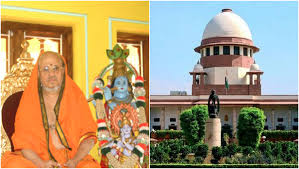Omi @ Omkar Rathore & Anr. Vs. State of Madhya Pradesh & Anr. [Special Leave Petition (Crl.) No(s). 17781 of 2024]
- ByPravleen Kaur --
- 15 Jun 2025 --
- 0 Comments
The Supreme Court of India, in Omi @ Omkar Rathore & Anr. vs. State of Madhya Pradesh & Anr. [Special Leave Petition (Crl.) No. 17781 of 2024], delivered its judgment on January 3, 2025, clarifying the scope and exercise of powers under Section 319 of the Code of Criminal Procedure (CrPC) regarding the summoning of additional accused persons during trial.
Facts and Background
The case arose from the murder of Abhishek Tomar in Gwalior on February 20, 2018. The FIR named seven accused, including Omi Rathore and another petitioner, but the police later filed a closure report exonerating these two petitioners due to insufficient evidence. However, during trial, the first informant and key witness, Raghvendra Tomar, deposed that the petitioners were involved and attributed specific overt acts to them.
Based on this testimony, the trial court invoked Section 319 CrPC to summon Omi Rathore and the other petitioner as accused to face trial alongside the originally charge-sheeted persons. The Madhya Pradesh High Court upheld this order.
Legal Issues
Whether a person named in the FIR but not charge-sheeted can be summoned as an accused during trial under Section 319 CrPC.
The evidentiary threshold and procedural safeguards for exercising powers under Section 319.
The relevance and effect of a police closure report exonerating a person on the court’s power to summon that person.
Supreme Court’s Analysis and Findings
The Supreme Court bench comprising Justices J.B. Pardiwala and R. Mahadevan upheld the High Court’s decision, emphasizing that:
The trial court has jurisdiction to summon any person as an accused if, during trial, evidence emerges indicating their involvement, even if they were not initially charge-sheeted.
The power under Section 319 CrPC is discretionary and extraordinary, to be exercised sparingly but not barred by a police closure report which has not been accepted by the court.
The court’s satisfaction must be based on evidence adduced during trial, not merely on materials in the charge sheet or case diary.
The phrase “any person not being the accused” includes persons initially named in the FIR but excluded from the charge sheet.
The court should not reject applications to add accused merely because the investigating officer did not find sufficient evidence; the complainant’s evidence may suffice.
The evidence required is stronger than a prima facie case but less than what is needed for conviction; it must be cogent enough to justify summoning.
The Court also clarified that the closure report filed by the police is not binding on the court, which independently evaluates the evidence.
Conclusion
The Supreme Court dismissed the petition, affirming the trial court’s and High Court’s orders summoning Omi Rathore and the other petitioner as accused. The judgment establishes that:
Courts have the power to summon additional accused during trial based on emerging evidence.
Police closure reports do not bar judicial scrutiny or summoning under Section 319.
The power under Section 319 must be exercised cautiously but effectively to ensure justice.
This ruling strengthens the judiciary’s role in ensuring all guilty parties face trial, preventing premature exoneration based solely on police investigation, and upholding the principles of fair and comprehensive criminal adjudication.






























0 comments